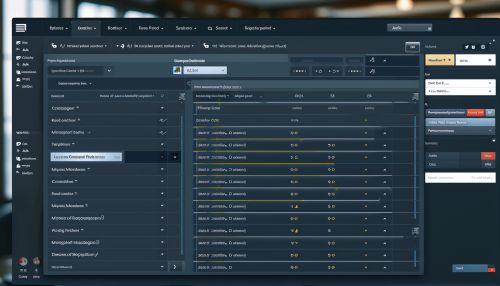Reference management software
Overview
Reference management software, also known as citation management software or bibliographic software, is a type of software designed to help researchers and writers create and manage their bibliographies, reference lists, and in-text citations. This software is particularly useful in academic and professional settings where the accurate citation of sources is essential for maintaining the integrity of the work.
History
The concept of reference management software dates back to the late 20th century. The first software of this kind was developed in the 1980s, with the advent of personal computers. Early examples include EndNote, which was first released in 1988, and ProCite, which was developed in 1983. These early programs were designed to run on desktop computers and required the user to manually input citation data.
Functionality
Reference management software offers a range of features designed to streamline the process of managing and citing references. These features typically include:
- Reference Storage: The software allows users to store and organize references in a single location. This can include books, journal articles, websites, and other types of sources.
- Citation Generation: The software can automatically generate in-text citations and reference lists in a variety of citation styles, including APA, MLA, Chicago, and others.
- Integration with Word Processors: Many reference management software programs offer integration with word processors like Microsoft Word and Google Docs, allowing users to insert citations directly into their documents.
- Search and Import Features: The software often includes features that allow users to search for references online and import them directly into their reference library.
- Collaboration Tools: Some reference management software also includes tools for collaboration, allowing multiple users to work on the same reference library simultaneously.


Types of Reference Management Software
There are several types of reference management software available, each with its own strengths and weaknesses. These include:
- Desktop Software: This type of software is installed directly onto the user's computer. Examples include EndNote, Zotero, and Mendeley.
- Web-Based Software: This type of software is accessed through a web browser and stores references in the cloud. Examples include RefWorks and CiteULike.
- Hybrid Software: This type of software combines elements of both desktop and web-based software. It can be installed on a computer but also offers cloud-based storage and syncing. Examples include the latest versions of EndNote and Mendeley.
Choosing a Reference Management Software
When choosing a reference management software, several factors should be considered. These include:
- Ease of Use: The software should be user-friendly and intuitive to use.
- Citation Styles: The software should support a wide range of citation styles to accommodate different disciplines and publishing requirements.
- Integration: The software should integrate seamlessly with the user's preferred word processor and other tools.
- Cost: The cost of the software can be a significant factor, especially for students or early-career researchers. Some software is available for free, while others require a subscription or one-time purchase.
- Support and Training: Good customer support and available training resources can be helpful, especially for new users.
Impact on Research and Writing
The use of reference management software has significantly impacted the process of research and writing in several ways:
- Efficiency: The software automates many of the tasks associated with managing and citing references, saving researchers and writers considerable time and effort.
- Accuracy: The software helps to ensure the accuracy of citations, reducing the risk of errors and plagiarism.
- Collaboration: The software facilitates collaboration by allowing multiple users to access and edit the same reference library.
- Accessibility: The software allows users to access their reference libraries from any computer with internet access, making it easier to work from different locations.
Criticisms and Limitations
Despite its many benefits, reference management software also has some limitations and has been subject to some criticism. These include:
- Learning Curve: The software can be complex and may require a significant investment of time to learn how to use effectively.
- Software Bugs and Glitches: Like any software, reference management software can have bugs and glitches that can cause problems for users.
- Limited Customization: The software may not offer enough customization options to meet the specific needs of all users.
- Cost: Some reference management software can be expensive, especially for individuals or institutions with limited budgets.
Future Developments
The field of reference management software is continually evolving, with new features and improvements being introduced regularly. Future developments may include enhanced collaboration tools, improved integration with other software and platforms, and more advanced search and import features.
See Also
- Comparison of reference management software - Academic writing - Citation - Bibliography
